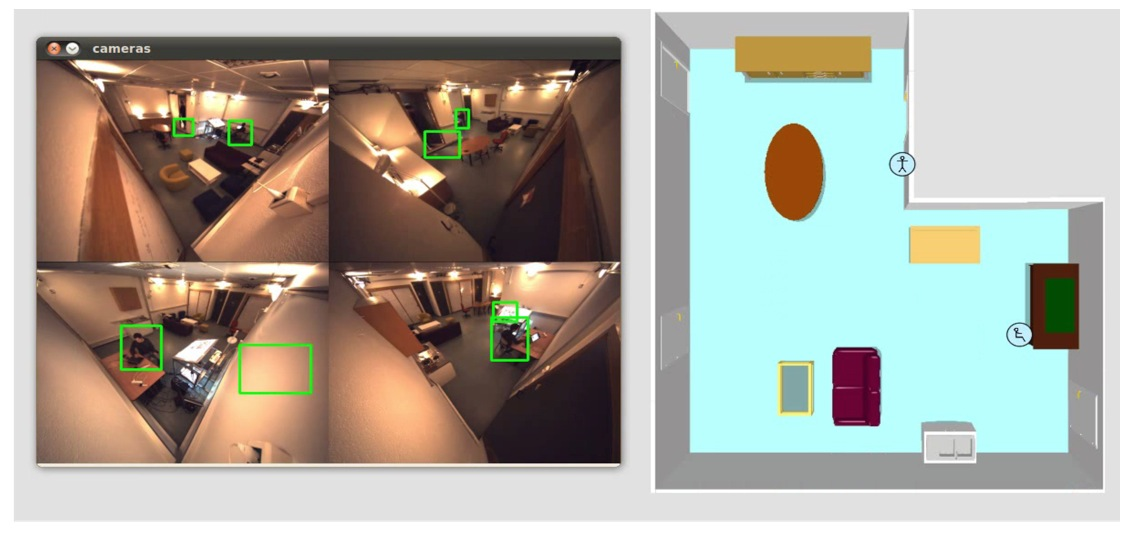Section: New Software and Platforms
Multisensor observation of human activity for integrated energy and comfort management
Participants : Claudine Combe, James Crowley [correspondant] , Lucas Nacsa, Amaury Negre, Lukas Rummelhard.
multimodal tracking of human activity
As part of Inria's contribution of ICTLabs Action TSES - Smart Energy Systems, we have constructed a system that integrates information from multiple environmental sensor to detect and track people in indoor environments. This system, constructed as part of activity 11831 Open SES Experience Labs for Prosumers and New Services, has been released to ICTLabs partners in June 2012. It has also been used for construction of a smart spaces testbed at Schneider Electric.
This software, named MultiSensor activity tracker, integrates information from multiple environmental sensors to keep track of the location and activity of people in a smart environment. This model is designed to be used by a home energy broker that would work in conjunction with a smart grid to manage the energy consumption of home appliances, balancing the needs of inhabitants with opportunities for savings offered by electricity rates. This database will also be used for by advisor services that will offer advice to inhabitants on the consequences to energy consumption and energy cost that could potentially result from changes to lifestyle or home energy use.
Work in this task draws from earlier result from a number of development projects at Inria. In the ANR Casper project Inria created Bayesian tracking system for human activity using a voxel based occupancy grid. Within the INRA ADT PAL project, Inria is creating methods for plug and play installation of visual and acoustic sensors for tracking human activity within indoor environments.
While a voxel based Bayesian tracker has served well for a number of applications, a number of limitations have been observed. For example, under certain circumstances, the sensor data can provide contradictory or ambiguous data about the location and activities of people. Resolving such cases required the Bayesian tracker to choose between a numbers of competing hypotheses, potentially resulting in errors. Several members of our group have argued that an alternative integration approach based on the use of a Particle filter would solve these problems and provide a more reliable tracking system. This task has been undertaken to evaluate this hypothesis. The system configured and optimized for detecting and tracking people within rooms using multiple calibrated cameras. The system currently uses corner mounted cartesian cameras, ceiling mounted cameras with wide angle lenses and panoramic cameras placed on tables. Cameras may be connected and disconnected while the component is running, but they must be pre-calibrated to a common room reference frame. We are currently experimenting with techniques for Bayesian estimation of camera parameters for auto-calibration. Cameras may be connected dynamically.
The original system 3DBT has been declared with the APP "Agence pour la Protection des Programmes" under the Interdeposit Digital number IDDN.FR.001.490023.000.S.P.2006.000.10000. A revised declaration for the latest version of the system is currently being prepared.


